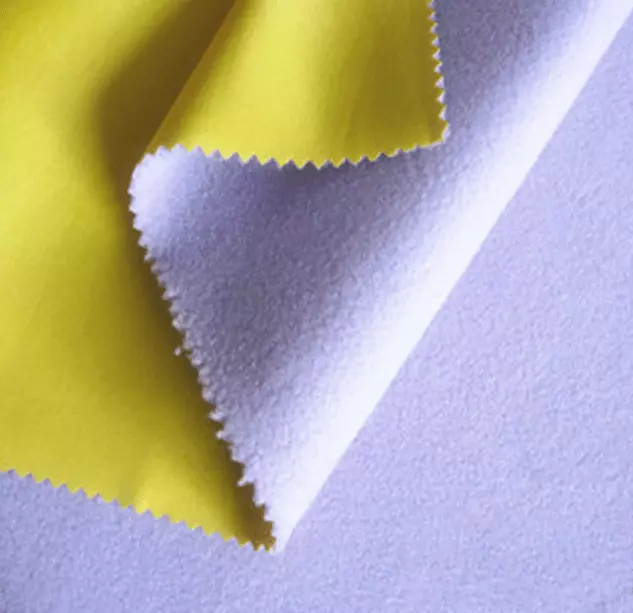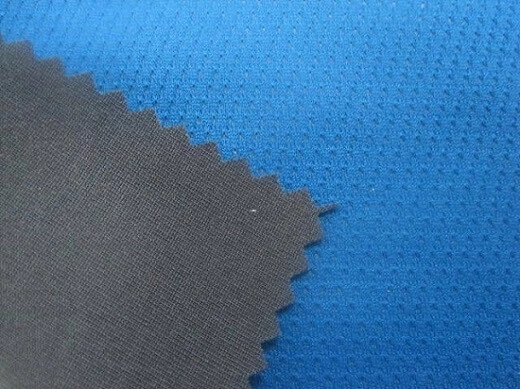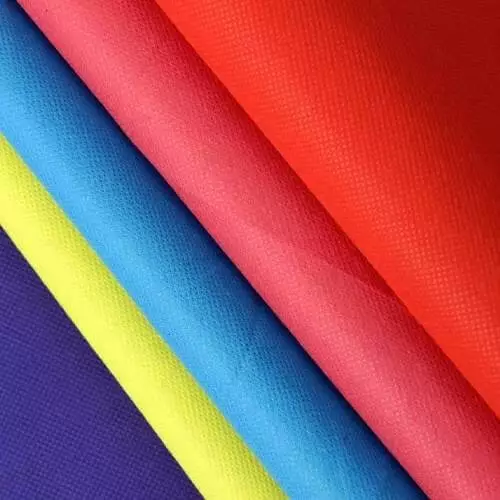Introduction
In this article, we will go through the overview of bonded fabric. So in this article, we will dive into, an introduction to bond with the bond fabric, its history, different types of bond fabrics, and its various application. So let’s start with the history of bond fabric. In the year 1952, the first bond fabric was produced in England, which was simple in construction, and Later on in the year 1953, some mesh and cross-laid materials were founded, which can be used to produce a bond fabric. In this process, the adhesive bonding fiber and fiber webs are used to join the fibers or blend one fabric with another. Later on, some different research and developments are done and through different experiments and developments, different varieties of bond fabrics are manufactured, which are manufactured through the use of knitted material and also from different fabric types like wool polyester, nylon, and the use of rubber also. And at present this material is manufactured by blending one textile with other textile materials like yarn, and fibers which include the use of rubber, plastic, etc. So, simply a bond fabric is a Non- Woven type of material which is mainly produced by fibers joined with each other.
So bond fabric is a type of composite material, which is formed by joining two or more different layers of fabric together by the application of some heat, mechanical process, or chemical process. Which provides some extra strength and stiffness to the fabric. These different process not only improves the fabric’s strength and stiffness but also improve the durability, and performance and adds unique characteristics into a single layer of fabric that are not achievable. Shortly we can say the bond fabric is a single layer of fabric used to, improve the property of the material and provide different advantages of each layer. In the past days, bond fabric are mostly widely used in the automotive industry and packaging, but nowadays it’s used by different sectors and Industrial application which includes Garments, Accessories, and home textiles. We will discuss these applications in upcoming points. Following photographs show the structure of the Bond or bonded fabric.

Types of Manufacturing Process of Bonded Fabrics
In today’s growing world we can manufacture any type of fabric by applying and combining different manufacturing processes, but specific to bonded nonwoven fabrics, the manufacturing process is mainly classified into three Different types of the manufacturing process which are
- Dry-laid manufacturing process
- The wet-laid manufacturing process
- Melt or spun Melt manufacturing process
Let’s discuss these all processes one by one
Dry-laid manufacturing process
It is one of the oldest techniques for manufacturing bonded fabrics. This process is similar to a felting process. In this process, a fibrous web-structured layer is flited subsequently in the presence of heat, moisture, and agitation. This fibrous web may be made up of natural material or synthetic type of material or from their compositions. In this process, different subsequent processes are carried out like fiber preparation, blending, carding process, and garnering are carried out. In this system of manufacturing web formation of dry laid fibers or a bunch of fibers are collected into a web sheet which is formed by parallel, cross, aerodynamic lapping of manufacturing. Here we can use mainly cotton fibers, and synthetic fibers, like viscose, nylon, and others. Then this web is bonded through mechanical needle punching, hydro entanglement, the chemical process of adhesives, or thermal process of bonding. This dry laid manufacturing process provides different applications like
- Baby wipes
- Tampons
- Medical textiles
- Adult incontinence products
- Diapers
- Feminine napkins
Wet-laid manufacturing process
This process is analogous to the conventional manufacturing process of paper making but in this process, we use chopped staple fibers or continuous synthetic material to manufacture different variety of nonwoven bonded fabrics. Wet- laid manufacturing process is the most widely used and it’s suitable for large-scale production systems. in this process, the short-length fibers or staple fibers are get dissolved into the liquid, and this liquid is substantially layers. The specific kind of raw material used in this process includes a natural range of materials like minerals wood pulps, and other natural fibers here we also use synthetic materials polyesters, polyamides, glass fibers, and sometimes regenerated fibers. So wet laid manufacturing process provides a long range of applications and is used for bulk production of manufacturing of goods. The application is as mentioned below
- Napkins
- Surgical gauze
- Tea bag fabrics
- Filter fabrics
- Apron
- Gloves
Melt or spun Melt manufacturing process
It is the manufacturing process of a nonwoven type of fabric by using thermoplastic materials like polymers or polyamides. This process is work on melt-blowing process technology here, the thermoplastic fiber-forming polymer is extruded with the help of a linear die. In this process the flow of hot air or steam is bombarded on the container containing polymer cheeps or finer fibers, so due to the hot air polymeric material start melting. Here this viscous material is passed through the spinnerets or a partially viscous state. The proper shape is given to the yarns of the fibrous sheet when they are in a thick viscous state. This process is used to increase the strength and luster of the material. To manufacture the bonded fabric polypropylene, polyesters, PET, and nylons, are some raw materials used with resin solutions. Here I mentioned some applications of the Melt or spun Melt manufacturing process used to manufacture the following material [2].
- Filtering material
- Warm filling material
- Face Mask
- Surgical Gown
- Sanitary materials
- Package
- Teabag
- Silica gel bag
- Diapers and sanitary pads
Major types of bonded fabric
Mainly in bonded fabrics differed by its type in two different categories, which are easily get available in the market. They are categorized by type of fabric and it’s properties. Here are the two major types of bonded fabric.

Woven bonded fabric
As we know woven fabric plays a very important role in our day-to-day life, starting from clothing to Home textile goods and others. But they are also used to manufacture different varieties of bonded fabrics. Woven bonded fabrics are produced by manufactured by a combination of bonded fabric and woven fabric as a base or as a cover to it. So in the end, they serve as a thick patterned fabric or cloth. As a bonded material mostly polyester is used as a bonded material and cotton fabric. So woven fabric provides a wide range of applications which include garment Medical textiles, geotextiles, technical textiles, and many more.

Non-woven bonded fabric
As I mention earlier non woven bonded fabrics are directly manufactured from fiber sheets they do not undergo the manufacture of yarns theme sheets of fibers directly manufacture by thermal, mechanical, or chemical bonded manufacturing process. A similar kind of raw material is used as per the end application and properties of the fabric. Non-woven fabric can easily bond when heat, pressure, or chemicals are used. Nonwoven fabrics manufacturer by use of some adhesive materials. Here two material or fabric layers are heated and go under particular pressure to form a thin sheet of fabric. Due to heat the adhesive paste present between the two surfaces is start to change its state and starts melting and forming a bonding with the fabric layer.
Here I mentioned other types of fabrics that are derivatives of these two types of bonded fabrics as:
- Quilting fabric
- Reversible fabric
- Knitted bonded fabrics
- Embossed fabric
- Stabilizer and inner lining
- Waterproof fabric
- For stability
- Fused fabric
- Soft shell fabric
- For warmth and bulkiness
- Absorbency
- Appearance
Applications of Bonded Nonwoven
Now let’s go through different lists of applications of bonded fabric, these all types of bonded fabric are mostly widely used and provide different ranges of advantages to us.
- Cover stock,
- High-loft webs or needled webs
- Medical
- Geotextiles
- Roofing felts
- Wiping cloths
- Carpet backing
- Industrial textiles
- Coating substrates
- Protective material
- Technical products
- Waste-fiber webs for various applications
- Interlining
- Webs for the upholstery industry
- Nonwoven wall coverings
- Padding material fiber fill webs
- Nonwoven covers
- Filtration webs
- Insulating material
- Decorative webs
- Needle-punched carpets
- Light-weight webs
- Tea bag paper
Advantages of Bonded fabric
As discussed above bonded fabrics are used by various textile and non textile sectors and they are widely used in our day to day life. So they serve various properties and advantages to us. The bonded fabric has good aesthetic properties, they have better durability and versatility. Bonded fabric provides different applications as per the properties of the raw material used. The product manufactured through thermal bonding, chemical bonding, and mechanical type of bonding provides, Thus Bonded fabric servers with remarkable innovation in the textile industry, offering a multitude of benefits and opportunities across various sectors. Here I mentioned some special properties and other benefits of bonded fabric are listed below
- Enhanced Durability
- Give stability and better surface property to the material
- Increases strength of the material
- Make material resistant to wear, tear
- Reduce fraying
- Water resistance
- Versatility
- Improve insulation property
- Bonded fabrics are easy to care
- Make material waterproof
- Reduce air permeability
- Improve porosity of material
- Resist from environment element
- Prevent from crease resistance
- Provide flexibility and comfort to the wearer
Limitations of Bonded fabric:
As discussed, bonded fabric have both pros and cons, they have some minor limitations such as,
- Low air permeability that is porosity
- More compact structure
- Pilling is by regular use or friction
- Poor breathability
- Potential delamination over
But in today’s world upcoming advances in technology and R&D will work on these limitations and lead to more sophisticated bonding techniques and applications. So that bonded fabrics can continue to play a significant role in textiles and nontextile sectors.
Conclusion
In conclusion, bonded fabric is a versatile composite material formed by joining layers of fabric through heat, mechanical, or chemical processes. It enhances fabric properties such as strength, durability, and versatility, making it valuable in various sectors. Bonded fabrics can be classified into woven and non-woven types, each offering distinct advantages. There are some limitations which include reduced breathability and potential delamination, ongoing technological advancements are expected to address these issues, ensuring that bonded fabrics remain crucial in both textile and non-textile industries.
Reference:
- https://fabriclore.com/blogs/fabric-wiki/information-about-bonded
- Types of Non-Woven Fabric, Manufacturing Processes, and Applications.” Textile News, Apparel News,
- www.textileproperty.com/what-is-bonded-fabric/. Accessed 7 Aug. 2023.
- textilelearner.net/thermal-bonding-process-of-nonwoven/.
- audaces.com/en/blog/bonded-fabric
